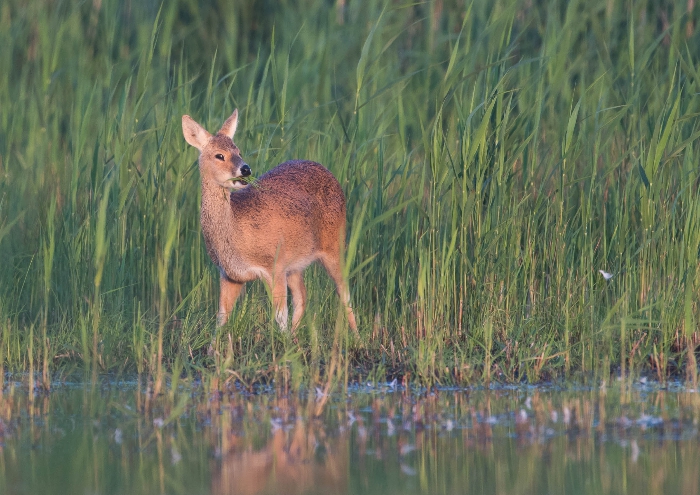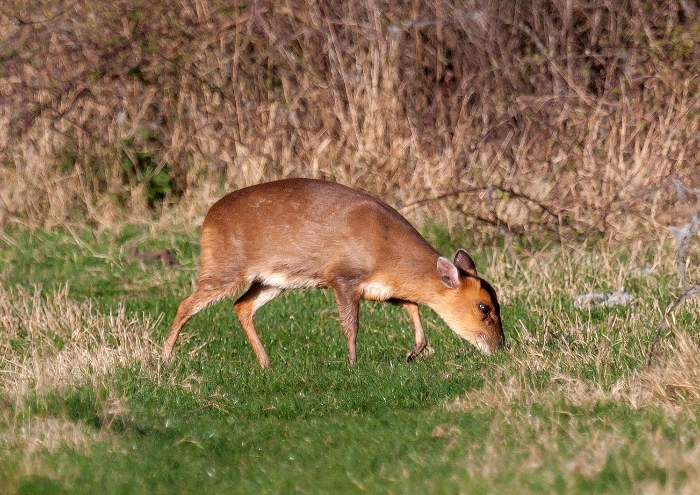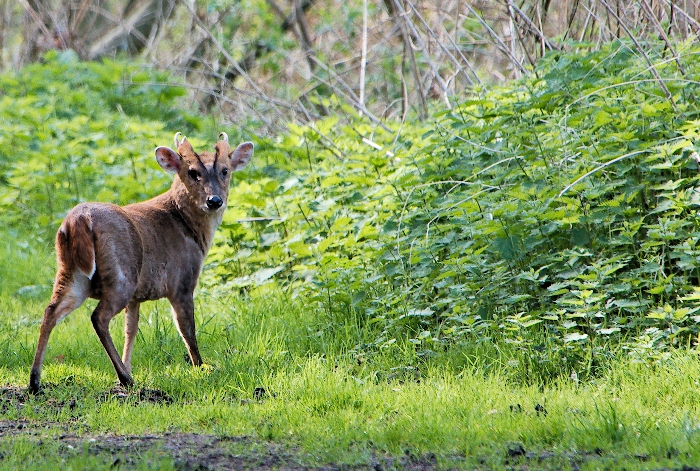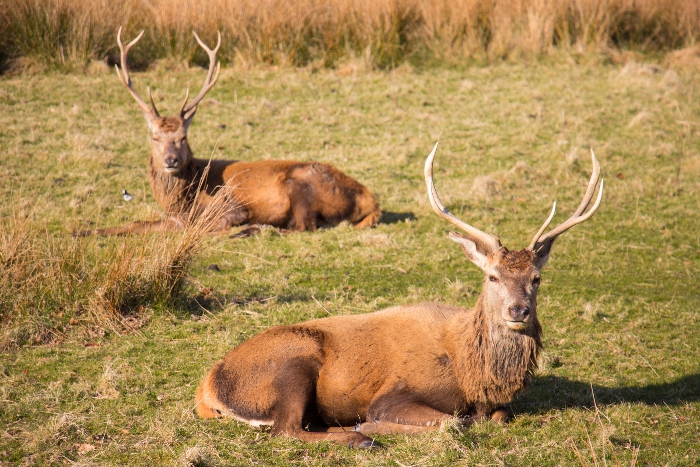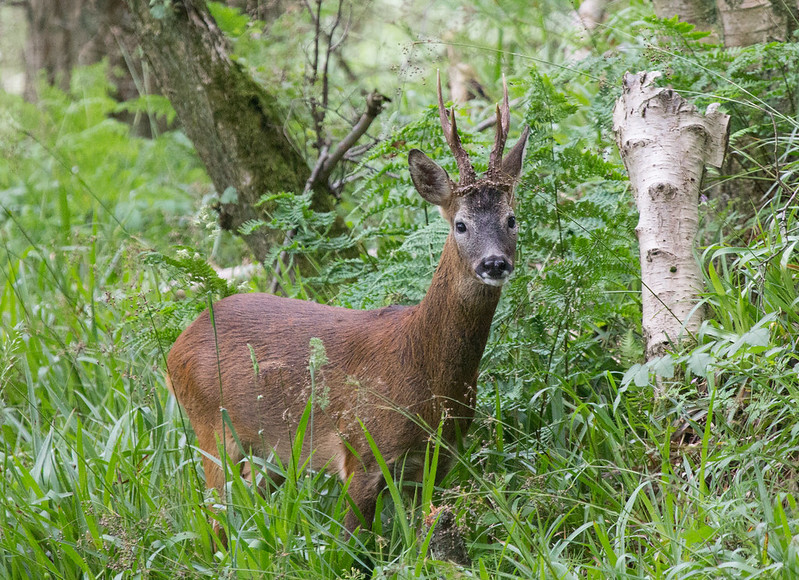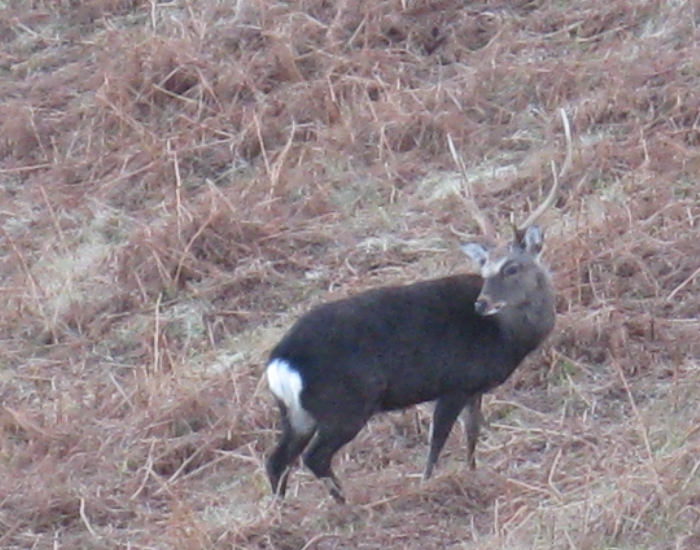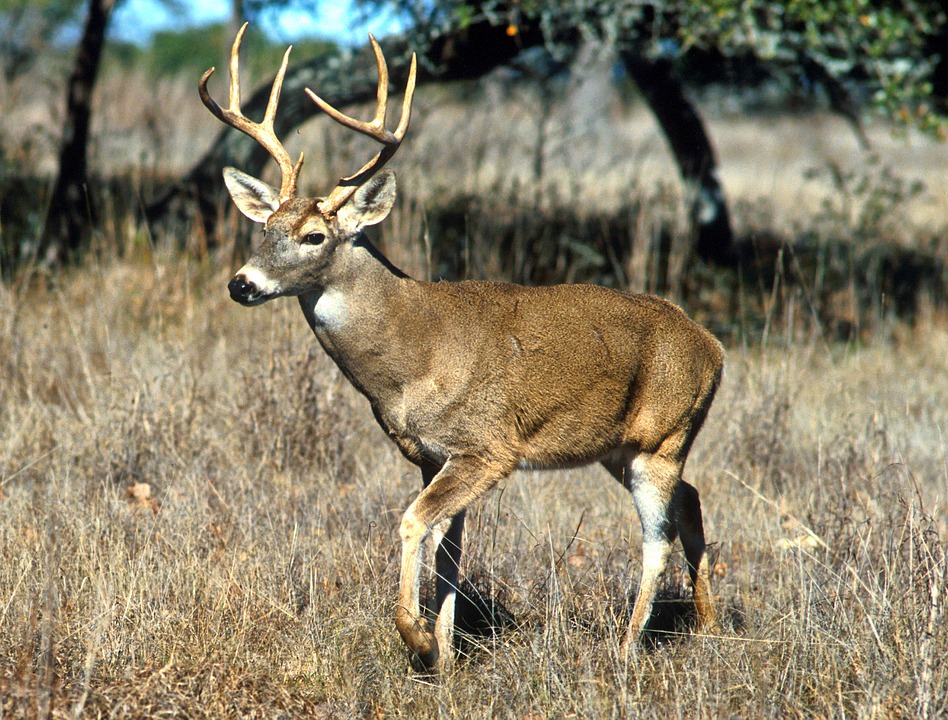Scientific name: Dama dama
Family: Cervidae
Size: Adults males are generally 84 – 94 cm at the shoulder and weigh 46 - 94kg. Adult females are 73 - 91cm at the shoulder and weigh 35 - 56kg.
Appearance: There are four main variations in coat but many minor variations also exist, including a long-haired version found in Mortimer Forest on the Shropshire / Herefordshire border. The common variety is the familiar tan/fawn colouring with white spotting (becoming long and grey with indistinct spots in winter) on the flanks and white rump patch outlined with a characteristic black horseshoe. The Menil variety is paler, lacks the black-bordered rump and keeps its white spots all year. The Melanistic (black) variety is almost entirely black with no white colouration anywhere. Finally, the white variety can be white to sandy coloured and becomes more white at adulthood. The fallow is the only British deer with palmate antlers. These increase in size with age reaching up to 70cm long when the adult is 3 - 4 years old.
Natural history: Non-native but widely-naturalised. Mostly woodland and open agricultural habitats.
Behaviour depends upon the environment and population density. In most populations bucks maintain a traditional, defended rutting stand. In others, a temporary rutting stand is maintained to attract sufficient does to herd them into a harem. In areas with very high buck densities a lek (a gathering of males engaging in competitive display to attract potential mates) may be formed. In lower density areas bucks may simply seek out receptive females. In common with other large species of deer, during conflict the bucks’ behaviour escalates from groaning and parallel walks to fighting. During the rut bucks groan tremendously and does with fawns give a short bark when alarmed.
After mating, adult does give birth to a single fawn in June or July after a gestation of 229 days. Bucks generally live for 8 – 10 years although they can live as long as 16 years.
Fallow deer are active throughout the 24-hour period but make use of open spaces during the hours of darkness in populations experiencing frequent disturbance. Peak activity is at dawn and dusk with most daytime hours spent ‘lying up’, where they lie down to ruminate between feeding bouts. (Source: https://www.bds.org.uk/index.php/advice-education/species/fallow-deer)
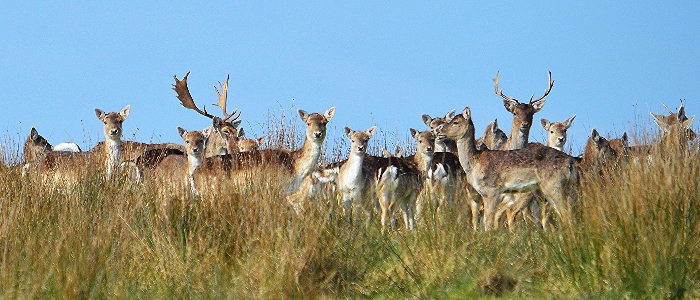
(C) Caroline Johnston (shared under a CC BY-NC-ND 2.0 license)

 English (United Kingdom)
English (United Kingdom)  Nederlands (nl-NL)
Nederlands (nl-NL)  Magyar
Magyar  Deutsch (Deutschland)
Deutsch (Deutschland)  Croatian (Hrvatski)
Croatian (Hrvatski)  Polski (PL)
Polski (PL)  Español (España)
Español (España) 